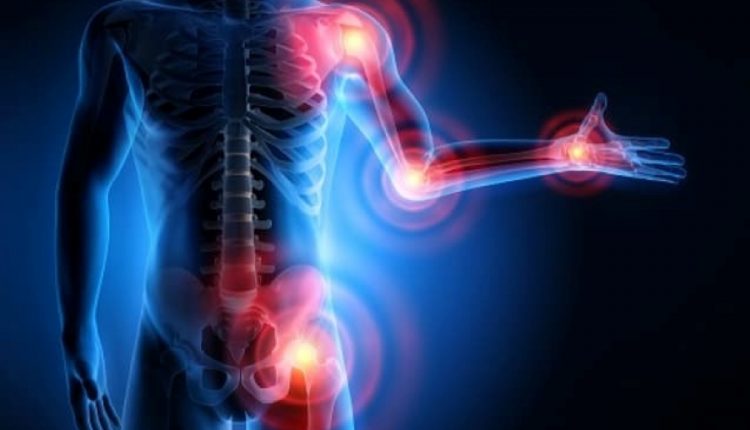
What is the link between positive ana and joint pain?
One of the blood tests that are often requested as the first frame of reference for a patient with joint pain and therefore suspected rheumatic disease are ANAs (Anti-Nuclear Antibodies)
These are used to evaluate the presence of certain types of autoimmune diseases, primarily Lupus.
Positivity to ANA testing is, therefore, associated with multiple autoimmune diseases
But is there a real association between joint pain and ANA positivity? Could this symptomatology be a red flag for possible autoimmune diseases?
What are ANAs and how are they measured
Some means available to our immune system for defense against infection are antibodies, which are proteins produced by certain cells of immunity called plasma cells, directed against certain structures of pathogenic organisms.
However, sometimes it may happen that instead of being directed against an ‘external’ organism, such as a virus or bacterium, they instead go against structures present inside our body: an example of this is precisely ANAs.
These antibodies are frequently found during systemic autoimmune rheumatologic diseases, so-called connectivitis.
ANAs are measured on a venous blood sample using a technique called Indirect Immunofluorescence (IFI)
Simply put, the patient’s blood is put in contact with a substrate that is able to bind these antibodies, if present in the patient’s blood, and make them visible under the microscope by a technique that makes them fluorescent.
The appearance that fluorescence takes on microscopic test is called a pattern and can be of many types.
Some of these patterns may already be indicative of the presence of a certain type of ANA, while other patterns are not specific and may be given by many types of antibodies, even those not responsible for pathology.
The other value that is reported in the report besides the pattern is the titer, which expresses the amount of ANA we have in our blood.
This value is expressed as a fraction, which indicates up to what dilution ANA is found at IFI
So a titer of 1:160 means there are fewer antibodies in the blood than a titer of 1:320 or 1:640 where they are present at a higher dilution.
For some diseases the cut-off (limit) of positivity may be 1:80 or 1:160 depending on the laboratory and especially the clinical picture.
Low titer positivities of ANAs are often found:
- in the absence of true systemic rheumatologic disease (healthy individuals);
- in the presence of autoimmune diseases not of rheumatologic concern, such as autoimmune thyroiditis, autoimmune hepatopathy, or during viral infections.
ANA positives and joint disease: is there really a correlation?
As mentioned then, an ANA positivity, especially a low titer, is not sufficient to make a diagnosis of a connective tissue disease.
Moreover, a direct correlation of ANA positivity with the pain symptom has never been demonstrated.
They, as already reiterated, are biomarkers of the possible presence of a systemic inflammatory pathology that, in turn, may be responsible for the joint symptoms complained of by the patient.
It should be pointed out, however, that connectivitis is considered a rare disease, meaning that it affects less than 0.05% of the population (as defined by the European Union), so one should be cautious about suspecting these diseases in the first instance in patients with only joint pain.
Interpreting any ANA positivity as ongoing systemic autoimmune disease could lead to even serious health consequences for patients, such as exposure to potentially unnecessary immunosuppressive drugs, which would lead to an increased risk of developing infections, and more.
In addition, ANAs tend to become positive in the absence of systemic disease in the elderly, an age group where joint symptoms are mostly due to conditions such as osteoarthritis that has nothing to do with ANA positivity.
Finally, it should be kept in mind that even in the case of the presence of a systemic autoimmune disease, other systemic and/or osteoarticular pathologies (e.g., diabetes, osteoarthritis, etc.) can be superimposed that can bring joint symptoms and disabilities, even to a considerable extent.
Thus, there is no direct correlation of ANAs with the pain symptom, but ANAs are potential markers of an autoimmune pathology that in turn, and in some cases, can lead to joint pain.
Therefore, the decision of ANA determination, but especially the interpretation of ANAs, must be made in a specialized setting in light of:
- clinical picture;
- all risk factors of the patient in question;
- after a thorough clinical test designed to identify the causes of joint symptoms.
In cases of doubt, the rheumatology specialist has the option of proceeding to second- or third-level tests, which are useful in assessing the actual presence, or exclusion, of a chronic inflammatory disease.
Read Also
Emergency Live Even More…Live: Download The New Free App Of Your Newspaper For IOS And Android
Arthrosis: What It Is And How To Treat It
Septic Arthritis: Symptoms, Causes And Treatment
Psoriatic Arthritis: How To Recognize It?
Arthrosis: What It Is And How To Treat It
Juvenile Idiopathic Arthritis: Study Of Oral Therapy With Tofacitinib By Gaslini Of Genoa
Rheumatic Diseases: Arthritis And Arthrosis, What Are The Differences?
Rheumatoid Arthritis: Symptoms, Diagnosis And Treatment
Joint Pain: Rheumatoid Arthritis Or Arthrosis?
The Barthel Index, An Indicator Of Autonomy
What Is Ankle Arthrosis? Causes, Risk Factors, Diagnosis And Treatment
Unicompartmental Prosthesis: The Answer To Gonarthrosis
Knee Arthrosis (Gonarthrosis): The Various Types Of ‘Customised’ Prosthesis
Symptoms, Diagnosis And Treatment Of Shoulder Arthrosis
Arthrosis Of The Hand: How It Occurs And What To Do
Arthritis: Definition, Diagnosis, Treatment, And Prognosis
Rheumatic Diseases: The Role Of Total Body MRI In Diagnosis
Rheumatology Tests: Arthroscopy And Other Joint Tests
Rheumatoid Arthritis: Advances In Diagnosis And Treatment
Diagnostic Tests: Arthro Magnetic Resonance Imaging (Arthro MRI)
Reactive Arthritis: Symptoms, Causes And Treatment
Psoriatic Arthritis: Symptoms, Causes And Treatment



